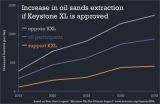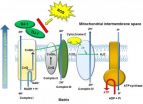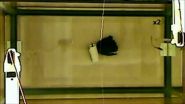(Press-News.org) San Francisco, September 15, 2014—Prostate cancer patients who received hypofractionated (HPFX) radiation therapy (RT) reported that their quality of life, as well as bladder and bowel function were at similar levels before and after RT, according to research presented today at the American Society for Radiation Oncology's (ASTRO's) 56th Annual Meeting. Additionally, results indicate that parallel quality of life outcomes occurred between groups of patients who receive different regimens of HPFX RT.
The phase I/II trial enrolled 343 patients with low-to-intermediate risk prostate cancer at five institutions from 2002 to 2010 to study the effectiveness of HPFX RT, as well as the patients' ability to tolerate the treatment. HPFX RT is radiation therapy in which the total dose of radiation is divided into large doses and administered over a shorter period of time (fewer days or weeks) than standard RT.
All of the patients received intensity-modulated radiation therapy (IMRT) to the prostate and base of the seminal vesicles. IMRT is an advanced high-precision RT that uses guided imaging techniques to deliver well-defined radiation doses to a tumor or specific areas within the tumor. IMRT allows for the radiation dose to conform more precisely to the three-dimensional shape of a tumor while minimizing radiation to surrounding tissues.
Patients were divided into three groups based on dose-per-fraction schedules (the amount of radiation administered during each RT session). Researchers calculated and designed the three different HPFX regimens in hopes that each might achieve similar disease control and consistently minimal side effects for patients. Group One's HPFX levels were 64.7 Gy total, with 22 fractions (doses) of 2.94 Gy each. Group Two's HPFX levels were 58.08 Gy total, with 16 fractions (doses) of 3.63 Gy each. Group Three's HPFX levels were 51.6 Gy total with 12 fractions (doses) of 4.3 Gy each.
Researchers evaluated the impact each treatment regimen had on the quality of life of patients, and all patients completed three quality-of-life (QOL) questionnaires at baseline and annually for up to three years post-treatment. Patient assessments measured bladder, bowel and sexual function, and included the Fox Chase Bowel/Bladder Toxicity questionnaire, the Spitzer Quality of Life Index (SQLI) questionnaire and the International Index of Erectile Function (IIEF) questionnaire.
Analysis of patient-scored QOL bowel data at three years post-treatment revealed no significant difference in average pre- to post-treatment score changes. Additionally, there was little difference in composite QOL outcomes across the three groups. Out of a maximum score of 100, the scores were 86.3 for Group One; 87.7 for Group Two; and, and 85.4 for Group Three (p=0.469). Similarly, QOL data regarding bladder function at three years follow-up was comparable across the three groups. Out of a maximum score of 100, the scores were 79.5 for Group One; 82.5 for Group Two and 81.1 for Group Three (p=0.343).
The SQLI data, which has a range of 0-10, revealed excellent, similar three-year mean scores of 9.5 for Group One; 9.8 for Group Two and 9.5 for Group Three (p=0.188). IIEF data on sexual function also revealed no significant difference across HPFX levels at three years post-treatment when assessing erectile function (p=0.07), orgasmic function (p=0.078), sexual desire (p=0.231), intercourse satisfaction (p=0.354) and overall satisfaction (p=0.191). All measures except intercourse satisfaction were significantly worse at three years when compared to baseline for all three treatment groups.
"These results will significantly contribute to the continued understanding of hypofractionation in the setting of prostate cancer," said lead author Jeffrey V. Brower MD, PhD, a radiation oncology resident at the University of Wisconsin Hospital and Clinics. "We were pleased by the overall minimal changes from baseline noted in the study participants following hypofractionated radiation. The findings of non-statistically significant differences noted when comparing hypofractionation regimens was as anticipated, as much work was done to calculate 'equivalent' doses and to predict late toxicities. Specifically, with regard to patient-reported quality of life outcomes, our research can assist in a continued paradigm shift concerning the role of hypofractionation in the treatment of prostate cancer, resulting in shorter treatment times and improved quality of life for our patients."
INFORMATION:
The abstract, "Quality of Life Outcomes from a Phase I/II Multi-institutional, Dose-per-Fraction Escalation Trial for Prostate Cancer," will be presented in detail during a scientific session at ASTRO's 56th Annual Meeting at 4:15 p.m. Pacific time on Monday, September 15, 2014. To speak with Dr. Brower, please call Michelle Kirkwood on September 14 – 17, 2014, in the ASTRO Press Office at the Moscone Center in San Francisco Center at 415-978-3503 or 415-978-3504, or email michellek@astro.org.
ASTRO's 56th Annual Meeting, to be held at the Moscone Center in San Francisco, September 14-17, 2014, is the nation's premier scientific meeting in radiation oncology. The 2014 Annual Meeting is expected to attract more than 11,000 attendees including oncologists from all disciplines, medical physicists, dosimetrists, radiation therapists, radiation oncology nurses and nurse practitioners, biologists, physician assistants, practice administrators, industry representatives and other health care professionals from around the world. Led by ASTRO President Bruce G. Haffty, MD, FASTRO, a radiation oncologist specializing in breast cancer, the theme of the 2014 Meeting is "Targeting Cancer: Technology and Biology," and the Presidential Symposium, "Local-regional Management of Breast Cancer: A Changing Paradigm," will feature Jay R. Harris, MD, FASTRO, and Thomas A. Buchholz, MD, FASTRO, to highlight recent practice-changing, landmark studies and current developments in the local-regional management of breast cancer. ASTRO's four-day scientific meeting includes presentation of up to four plenary papers, 360 oral presentations, 1,862 posters and 144 digital posters in more than 50 educational sessions and scientific panels for 20 disease-site tracks. Three keynote speakers will address a range of topics including oncologic imaging, biology and targeting in oncology, and human error and safety concerns: Hedvig Hricak, MD, PhD, Chair of the Department of Radiology and the Carroll and Milton Petrie Chair at Memorial Sloan Kettering Cancer Center; Frank McCormick, PhD, FRS, DSc (hon), Professor Emeritus and the David A. Wood Distinguished Professor of Tumor Biology and Cancer Research of the University of California at San Francisco Helen Diller Family Comprehensive Cancer Center; and Sidney Dekker, PhD, MA, MSc, Professor and Director of the Safety Science Innovation Lab at Griffith University, Brisbane, Australia.
About ASTRO
ASTRO is the premier radiation oncology society in the world, with more than 10,000 members who are physicians, nurses, biologists, physicists, radiation therapists, dosimetrists and other health care professionals that specialize in treating patients with radiation therapies. As the leading organization in radiation oncology, the Society is dedicated to improving patient care through professional education and training, support for clinical practice and health policy standards, advancement of science and research, and advocacy. ASTRO publishes two medical journals, International Journal of Radiation Oncology, Biology, Physics and Practical Radiation Oncology; developed and maintains an extensive patient website, http://www.rtanswers.org; and created the Radiation Oncology Institute, a non-profit foundation to support research and education efforts around the world that enhance and confirm the critical role of radiation therapy in improving cancer treatment. To learn more about ASTRO, visit http://www.astro.org.
2014 American Society for Radiation Oncology (ASTRO) 56th Annual Meeting
News Briefing, Monday, September 15, 2014, 8:15 a.m. Pacific time
Scientific Session: Monday, September 15, 2014, 4:15 – 5:45 p.m. PT, the Moscone Center
107 Quality of Life Outcomes from a Phase I/II Multi-institutional, Dose-per-Fraction Escalation Trial for Prostate Cancer
Author Block: J. V. Brower1, J. D. Forman2, P. A. Kupelian3, V. Gondi4,1, D. G. Petereit5, C. A. Lawton6, N. J. Anger1, S. Saha1, R. J. Chappell1, M. A. Ritter1, 1University of Wisconsin Carbone Cancer Center, Madison, WI, 2Wayne State University, Detroit, MI, 3UCLA Medical Center, Santa Monica, CA, 4CDH Cancer Center, Warrenville, IL, 5John T. Vucurevich Cancer Center Institute, Rapid City, SD, 6Medical College of Wisconsin, Milwaukee, WI
Abstract Body
Purpose/Objective(s): A phase I/II clinical trial carried out by 5 institutions explored the tolerance and efficacy of increasingly hypofractionated (HPFX) radiation therapy for low/intermediate risk prostate cancer. Published quality of life (QOL) data for HPFX regimens remain limited and here we report on QOL measures recorded from this large, multi-institutional trial.
Materials/Methods: 343 patients were enrolled at five institutions from 2002 to 2010. Three increasing dose-per-fraction schedules were designed to yield equivalent predicted late toxicity, with EQD2 doses of 75-77 Gy, assuming an alpha/beta ratio of 3 Gy for late effects. HPFX levels were: 64.7 Gy/22 fx of 2.94 Gy, 58.08 Gy/16 fx of 3.63 Gy and 51.6 Gy/12 fx of 4.3 Gy each. Patients were treated to the prostate ± seminal vesicles utilizing IMRT with daily image guidance. Three quality of life (QOL) surveys were administered annually up to 3 years and included the Fox Chase Bowel/Bladder Toxicity, the Spitzer Quality of Life Index (SQLI) and the International Index of Erectile Function (IIEF) instruments.
Results: Acute and late physician-scored toxicities were statistically non-different across all 3 HPFX levels. Analysis of patient-scored QOL bowel data at 3 years revealed no significant difference in average pre- to post-treatment score changes, which were modest, or in composite QOL outcomes across the 3 regimens, with scores of 86.3, 87.7, and 85.4 resp., out of a maximum 100 (p=0.469). Similarly, bladder outcomes at 3-years were comparable at 79.5, 82.5 and 81.1 of 100 (p=0.343). The SQLI data (range of 0-10) revealed excellent, similar 3-year mean scores of 9.5, 9.8 and 9.5, resp. (p=0.188). IIEF data also revealed no significant difference across HPFX levels at 3 years when assessing erectile function (p=0.07), orgasmic function (p=0.078), sexual (p=0.231), intercourse satisfaction (p=0.354) and overall satisfaction (p=0.191), although all measures except intercourse satisfaction significantly worsened post-treatment.
Conclusions: Three-year QOL scores for bowel, bladder, Spitzer Quality of Life and sexual function were similar for 3 prospectively-delivered HPFX prostate cancer regimens spanning a range of 2.94 Gy to 4.3 Gy per fraction. These favorable patient-scored QOL outcome trends are consistent with physician-based toxicity scoring and provide further support for HPFX safety and tolerability. Furthermore, the predictive power of Linear Quadratic modeling for toxicity and QOL demonstrated herein for these 3 HPFX regimens lends confidence to the validity of such modeling in future HPFX trial design, at least within the range of fraction sizes employed here. Taken collectively, these data may be leveraged to support the continued investigation of hypofractionation for prostate cancer.
This work was supported by NIH R01CA106835 and P01 CA88960.
Author Disclosure Block: J.V. Brower: None. J.D. Forman: None. P.A. Kupelian: None. V. Gondi: None. D.G. Petereit: None. C.A. Lawton: None. N.J. Anger: None. S. Saha: None. R.J. Chappell: None. M.A. Ritter: None.
Prostate cancer patients who receive hypofractionated RT report consistent QoL
2014-09-16
ELSE PRESS RELEASES FROM THIS DATE:
Prostate cancer patients surveyed 5 years after vessel-sparing RT report preserved sexual function
2014-09-16
San Francisco, September 15, 2014—A comparison of five-year sexual function outcomes, as reported by patients treated with external beam radiotherapy (EBRT) versus combination EBRT plus brachytherapy, indicates that the utilization of vessel-sparing radiation therapy makes cure possible without compromising long-term sexual function, according to research presented today at the American Society for Radiation Oncology's (ASTRO's) 56th Annual Meeting.
The study examined the patient-reported outcomes of 91 men with prostate cancer who received MRI-guided, vessel-sparing ...
Keystone XL would likely raise oil sands production and greenhouse gas emissions
2014-09-16
Approval of the Keystone XL pipeline (KXL) would likely increase oil sands extraction, according to 26 oil sands professionals and researchers surveyed by the non-profit organization Near Zero. The results are detailed in the report, "Keystone XL: The Climate Impact," and includes both supporters and opponents of the pipeline.
This additional extraction of oil sands could lead to significantly higher greenhouse gas emissions, with the exact amount depending largely on how markets respond.
"This report examines three main scenarios discussed by participants in our ...
Single fraction RT as effective as multiple fraction RT for bone metastases
2014-09-16
San Francisco, September 15, 2014—A prospective study that compared patient-reported outcomes of a broad set of cancer patients with bone metastases demonstrates that single fraction radiation therapy (SFRT) is equally as effective as multiple fraction radiation therapy (MFRT) when pain, function and quality of life are considered, according to research presented today at the American Society for Radiation Oncology's (ASTRO's) 56th Annual Meeting. The multi-center study indicates that improvements in patients' pain, function and degree of distress were similar between the ...
Microbiome research shows each tree species has a unique bacterial identity
2014-09-16
EUGENE, Ore. -- Each tree species has its own bacterial identity. That's the conclusion of University of Oregon researchers and colleagues from other institutions who studied the genetic fingerprints of bacteria on 57 species of trees growing on a Panamanian island.
"This study demonstrates for the first time that host plants from different plant families and with different ecological strategies possess very different microbial communities on their leaves," said lead author Steven W. Kembel, a former postdoctoral researcher in the UO's Institute of Ecology and Evolution ...
Molecular mechanisms of the suppression of axon regeneration by KLF transcription factors
2014-09-16
Molecular mechanisms of the Krüppel-like family of transcription factors (KLFs) have been studied more in proliferating cells than in post-mitotic cells such as neurons. Prof. Jeffrey L. Goldberg who comes from University of California San Diego, USA and his team recently found that KLFs regulate intrinsic axon growth ability in central nervous system (CNS) neurons including retinal ganglion cells, and hippocampal and cortical neurons. With at least 15 of 17 KLF family members expressed in neurons and at least 5 structurally unique subfamilies, it is important to ...
Give progesterone a chance
2014-09-16
There is currently no standard pharmacological treatment for spinal cord injury. Here, Dr. Florencia Labombarda, who comes from Buenos Aires University, Argentina suggests that progesterone, a steroid hormone, may be a promising therapeutical candidate as it is already for traumatic brain injury, where it has reached phase II clinical trials. We rely on previous works showing anti-inflammatory, neuroprotective and promyelinating roles for progesterone after spinal cord injury and in our recent paper, in which we demonstrate that progesterone diminishes lesion, preserves ...
The role of DJ-1 in the oxidative stress cell death cascade after stroke
2014-09-16
Oxidative stress is closely associated with secondary cell death in many disorders of the central nervous system including stroke, Parkinson's disease, Alzheimer's disease. Among many aberrant oxidative stress-associated proteins, DJ-1 has been associated with the oxidative stress cell death cascade primarily in Parkinson's disease. Although principally expressed in the cytoplasm and nucleus, DJ-1 can be secreted into the serum under pathological condition. Recently, a close pathological association between DJ-1 and oxidative stress in stroke has been implicated. To this ...
A heart-felt need for dairy food
2014-09-16
A daily small serve of dairy food may reduce the risk of heart disease or stroke, even in communities where such foods have not traditionally formed part of the diet.
A study of nearly 4000 Taiwanese, led by Emeritus Professor Mark Wahlqvist from Monash University's Department of Epidemiology and Preventive Medicine and the Monash Asia Institute, considered the role increased consumption of dairy foods had played in the country's gains in health and longevity.
"In a dominantly Chinese food culture, unaccustomed to dairy foods, consuming them up to seven times a ...
More cheese, please! News study shows dairy is good for your metabolic health
2014-09-16
This news release is available in French. Dairy is considered part of a healthy diet and dietary guidelines recommend the daily consumption of 2-4 portions of milk-based products such as milk, yogurt, cheese, cream and butter.
It's well known that dairy products contain calcium and minerals good for bones, but new research has shown that dairy consumption may also have beneficial effects on metabolic health and can reduce risk of metabolic diseases such as obesity and type 2 diabetes.
Curious about these impacts, researchers from CHU de Québec Research Center ...
Judging a fish by its color: for female bluefin killifish, love is a yellow mate
2014-09-16
VIDEO:
NYU Polytechnic School of Engineering researchers and their collaborators at University of Illinois at Urbana-Champaign found that fertile killifish females preferred swimming near a male replica that moved through the...
Click here for more information.
There's an old adage that warns against passing judgment based on appearance, but female bluefin killifish, like many animal species, apparently don't share such human wisdom when choosing a mate. Researchers at the New ...


